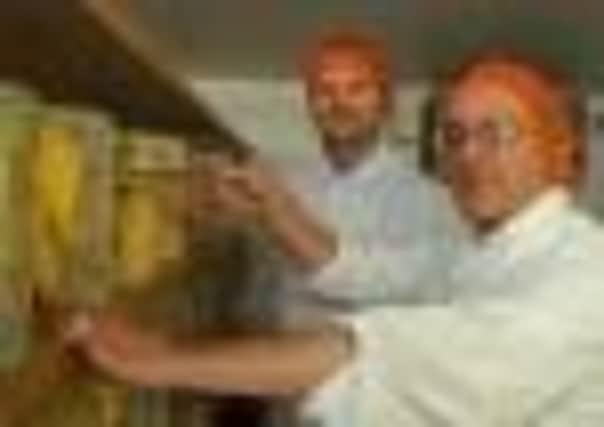VIDEO: County cheese rises from the ashes


It’s a crisp winter’s morning when I arrive bright and early at Pikehall Farm, the home of Hartington Creamery.
A herd of cows looks up from its breakfast as I enter the farm – this really is the heart of the Peak District.
Advertisement
Hide AdAdvertisement
Hide AdA team of cheese experts with dreams of bringing the taste of the Peaks back to the deli counter got together last year to open the business three years after the original Hartington Dairy closed.


I am to spend my day with cheesemakers Adrian Cartlidge and Alan Salt, who worked at the Hartington Dairy for more than 50 years combined and run the new business alongside Gary and Claire Millner, of the Hartington Cheese Shop, and Simon Davidson, of the Cheese Factor, Chesterfield.
I have to change my journalist clothes for a fetching white coat and hair net before entering the vat room, where the cheese is made.
Two days previously the creamery received the milk used to make the cheese from Derbyshire farms.
Advertisement
Hide AdAdvertisement
Hide Ad“We are a Derbyshire company making Derbyshire cheese with Derbyshire milk,” Alan, 57, states proudly.
The milk was pasteurised in order to kill off any harmful bacteria that may have been in it. Good bacteria was then added, along with an enzyme called rennet, which gives it a jelly–like consistency.
The milk was left to separate into curds and whey, which is the stage the cheesemakers are at now.
The whey is drained from the curds, leaving feta–like product.
“Pigs love the whey,” Alan comments.
Advertisement
Hide AdAdvertisement
Hide Ad“It’s nutritious for them. In fact we are looking for some Derbyshire farmers with pigs to give it to.”
The cheesemakers turn the curds.
“What we do is release the trapped whey,” Adrian, 45, explains.
“As the acidity increases it causes the curd to contract, so the whey is released.”
Today we are making Peakland white. In order to make a blue cheese, we would add a mould culture.
Advertisement
Hide AdAdvertisement
Hide Ad“Cheese originally wasn’t made for pleasure, it was a way of preserving milk,” Alan adds.
“You think about it, a pint of milk lasts a week or two, turn it into a piece of cheese and it lasts much longer. The first cheese factories were in Derbyshire and Somerset. There was more factories round here then anywhere in the country.
“We are the only one now – we have risen from the ashes.”
The cheesemakers add salt to the curds, then turn them – this process is repeated until the cheese takes on a Wensleydale–like quality.
The next stage in the process is breaking the cheese into smaller pieces or ‘milling’.
Advertisement
Hide AdAdvertisement
Hide AdThis is done by hand, so I roll up my sleeves to help. There is an odd sense of satisfaction in breaking up the cheese but it is physical work and after a while my back begins to ache.
Once this process is complete the cheese is placed in large moulds and placed in a cooler room, where it will be stored for about three days – during which time it will be turned again.
The end result is a creamy white cheese that will go on sale in the Hartington Cheese Shop and the Cheese Factor, in Chesterfield.
Adrian says: “The aim is quality rather than quantity. It’s very artisan and we’re very passionate about it.”
Further information is available by visiting www.hartingtoncreamery.co.uk
Click on the link above to see a video of the cheesemaking process.